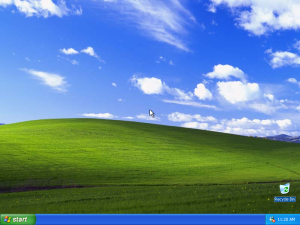 Windows XP’s disappearance and Windows 8’s march toward some form of success were both put on hold in January, Web analytics firm Net Applications said Saturday.
Windows XP’s disappearance and Windows 8’s march toward some form of success were both put on hold in January, Web analytics firm Net Applications said Saturday.
Neither are good signs for Microsoft, which has bet the future on Windows 8 and is coming close to begging customers to abandon the creaky Windows XP.
According to Aliso Viejo of the California company, Windows XP increased its share by a quarter of a percentage point in January, ending the month at 29.2% of all desktop and notebook computers worldwide, the first time it had meaningful growth since March 2012.
The 13-year-old operating system accounted for nearly a third – 32% – of Windows-powered PCs.
Windows XP’s increase in user share, a rough measurement of what fraction of the world’s computer owners run a specific operating system, had to be a disappointment in Redmond, Wash., headquarters of Microsoft.
The technology giant has relentlessly warned customers that they need to get off XP before it’s retired from security support on 8th April, 2014. Although at times the messages have been heard – in December, Windows XP’s user share fell 2.2 percentage points, or nine times more than in January – the stall last month was reminiscent of a pause in October after the OS plummeted by nearly 6 percentage points in the two months prior.
Because of the unexpected respite in XP’s decline, Viejo now forecasts that the OS will power about 27% of all personal computers at the end of April, and nearly 30% of those running one flavour or another of Windows.
Unless Windows XP restarts a dramatic decline, the operating system will still be powering one in five personal computers at the end of 2014.
Microsoft will provide the final public patches for known vulnerabilities in XP on 8th April; after that, customers will face an increasingly dangerous future, as most security experts, including those working for Microsoft, expect cyber criminals to continue to dig up new bugs, called “zero days,” and unleash exploits on people who still rely on the retired OS.
Microsoft has said successful attacks against XP-powered PCs could skyrocket by as much as 66% after April.
While XP grew, Windows 8 remained nearly flat in January, another troubling signal for Microsoft.
The combined user share of Windows 8 and 8.1 gained just one-tenth of a percentage point, ending January with 10.6% of all computers. Windows 8/8.1 accounted for 11.7% of those running a Microsoft OS.
January’s stay-in-place was in contrast to December, when Windows 8 and 8.1 gained 1.2 percentage points, the largest monthly jump since September. Just as disturbing was the lack of movement by Windows 8.1, the free update issued last year, which accounted for about the same percentage of the combined total as in December: 37%.
Net Applications’ statistics, being estimates of share rather than of numbers of devices in use, are often inscrutable as to the cause of any changes, whether positive or negative. The lack of movement in XP and Windows 8 is most likely only temporary, as there are precedents for such stops and starts.
Even so, the adoption of Windows 8 and 8.1 continued to badly lag behind that of Windows 7 at the latter’s same point in its uptake cycle. Fifteen months after Windows 7’s debut, it powered 25% of all personal computers, more than double Windows 8’s and 8.1’s.
Windows 8 did remain ahead of Windows Vista’s pace, but the gap between the two narrowed by one-tenth of a percentage point last month. Vista has become a benchmark of sorts for Windows 8 as observers increasingly compare the two. Those comparisons are Windows 8’s loss since Vista was one of Microsoft’s rare full-fledged failures.
Net Applications measures operating system user share by tracking unique visitors to approximately 40,000 sites that rely on its metrics software.
The company’s figures are often at odds with those rival StatCounter generates because the two measure differently. StatCounter tallies usage share via page views to show how active users of each OS are on the Web.
StatCounter’s Windows 8 and Windows 8.1 usage share for desktops totalled 10.3% in January, just a shade lower than Net Applications’. But the Irish metrics firm pegged Windows XP at just 17.8% and Windows 7 at 50.3%, much lower and somewhat higher, respectively.
Windows 8/8.1’s combined uptake stalled in January after a nice gain the month before. But it remained far behind Windows 7’s adoption pace.





